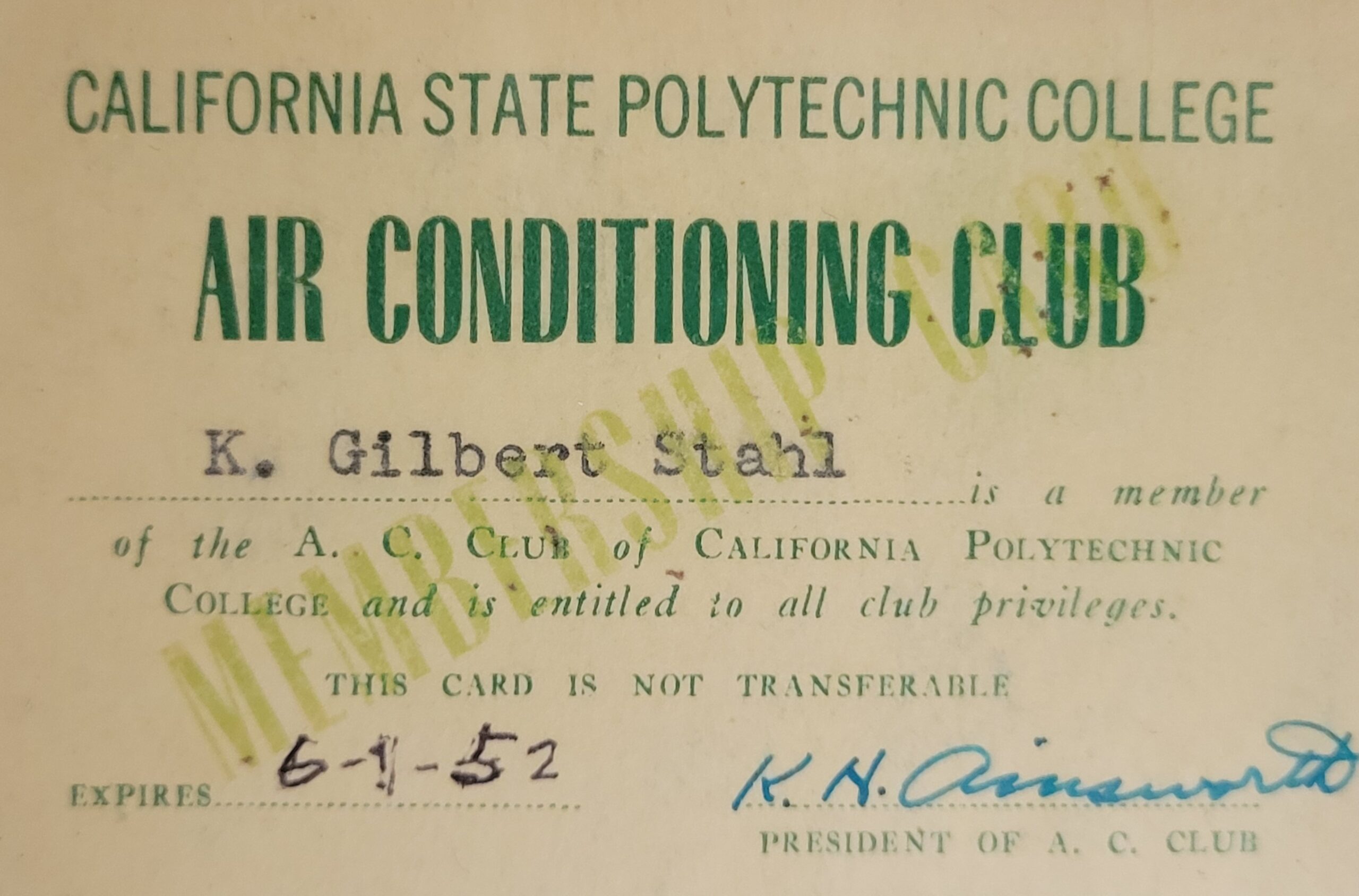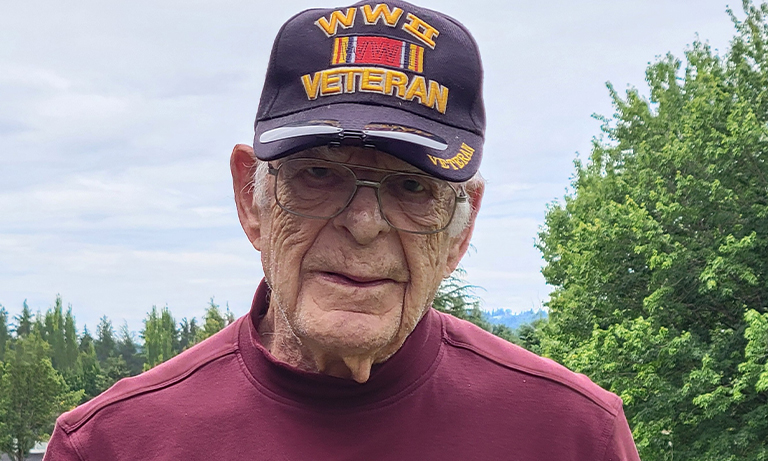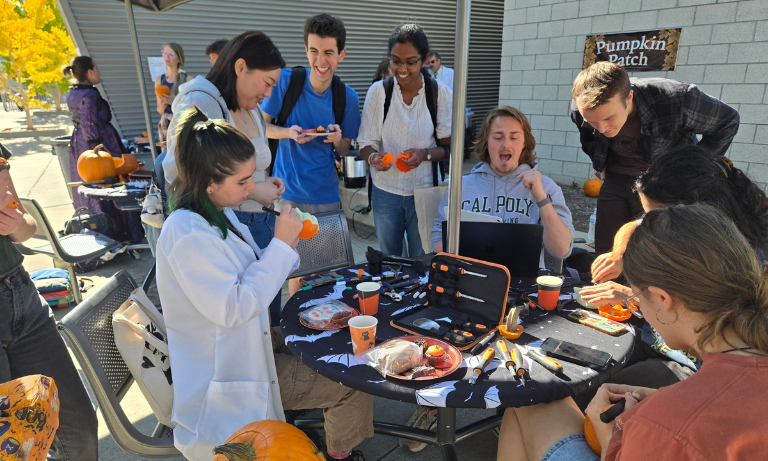When Gil Stahl enrolled at Cal Poly in 1948, heating, ventilation, air conditioning and refrigeration (HVAC&R) was still a budding industry. So was the university’s HVAC&R program. A Navy veteran drawn to engineering, Stahl joined a pioneering group of students who helped shape what would become one of Cal Poly’s signature areas of expertise: hands-on education in climate control systems.
Like many veterans attending college on the GI Bill, Stahl lived off campus in modest housing and worked nights at the Oceano Ice Plant to help support his studies. He graduated in 1952 with a degree in air conditioning and refrigeration engineering. More than 70 years later, he reflects on his time in the program — from lab experiences to lasting friendships — and shares how it helped launch a long and varied career in the HVAC&R industry.
Why did you choose to pursue mechanical engineering?
After leaving the Navy, I took a series of aptitude tests. I knew I didn’t want to follow my dad into the butcher business, but I was drawn to mechanical engineering. The tests showed I had an aptitude for it — or, amusingly, for becoming a sewing machine repairman.
How did you become interested in HVAC&R?
One of the aptitude test administrators asked if I had heard of Cal Poly (I hadn’t) or knew about a program in air conditioning and refrigeration (I didn’t). I had a friend in the mechanical engineering program at Oregon State College, and we visited Cal Poly in the summer of 1948. He felt the facilities and curriculum here looked better for air conditioning and refrigeration than at OSC, so I enrolled that fall. My registration fee under the GI Bill was $5.

Was Cal Poly considered a leader in HVAC&R education at the time?
Yes, it was a unique program. Cal Poly offered three tracks: vocational (two years), technical (three years) and degree (four years). The mechanical engineering and air conditioning/refrigeration programs ran parallel. One focused on power plant design; the other on HVAC&R system design. The courses were largely the same.
At the time, maybe one other college on the East Coast offered anything comparable in heating and ventilation. Cal Poly stood out for its curriculum and for the “upside-down” approach, which introduced technical coursework early on.
Manufacturers like Carrier, Frick and Vilter offered factory-based refrigeration training for salespeople. Carrier and Trane did the same for air conditioning. Those of us trained at the factory would later host seminars for contractors and consulting engineers. There weren’t many independent consultants in refrigeration yet — contractors learned directly from the manufacturers.
Our main textbook was written by department head Norman Sharpe. It started out as mimeographed pages, bound in wire 2-hole binders. He eventually published it in hardcover. I donated my original copy to the museum at Refrigeration Supplies Distributor (RSD) in Portland.
What was your connection to the American Society of Refrigerating Engineers (ASRE)?
We weren’t eligible for the American Society of Heating and Ventilating Engineers (ASHVE) membership as students, but the American Society of Refrigerating Engineers (ASRE) had a student member program. I joined around 1950 or 1951, became a full member around 1954 and joined ASHVE around that time. I still remember when the two merged to form the American Society of Heating, Refrigerating and Air-Conditioning Engineers (ASHRAE) in the late 1950s or early 1960s — a turning point for the field.
What were some highlights of being in the HVAC&R program at Cal Poly?
One standout was working on the water-source heat pump in the lab — one of the few of its kind nationally. It was a very hands-on experience. Outside the lab, entertainment was limited: we had the beach at Avila, Poly Royal and Fiesta Days, a local community celebration. But the best part was the friendships. We became a close-knit group as we moved through the program. Of the 72 in our freshman class, only 13 of us graduated — and that small number made our bonds even stronger.
How did your education prepare you for your career?
The upside-down program gave Cal Poly grads a head start. Employers valued how quickly we could contribute on the job.
I began with Carrier and Vilter contractors, designing industrial refrigeration and commercial air conditioning systems. That early experience, along with factory training, laid the groundwork for a career that included engineering, sales and leadership roles across several major HVAC&R companies. I retired in 1992 after more than four decades in the field.
What advice would you give students interested in HVAC&R today?
Everything has changed — the students, the curriculum, the industry. But there’s still a strong and growing need for well-trained technicians. In my day, Cal Poly was already providing that, and today’s students and faculty are doing even more.
We left our marks on the industry and helped it grow. But today’s students are taking it to new levels.


